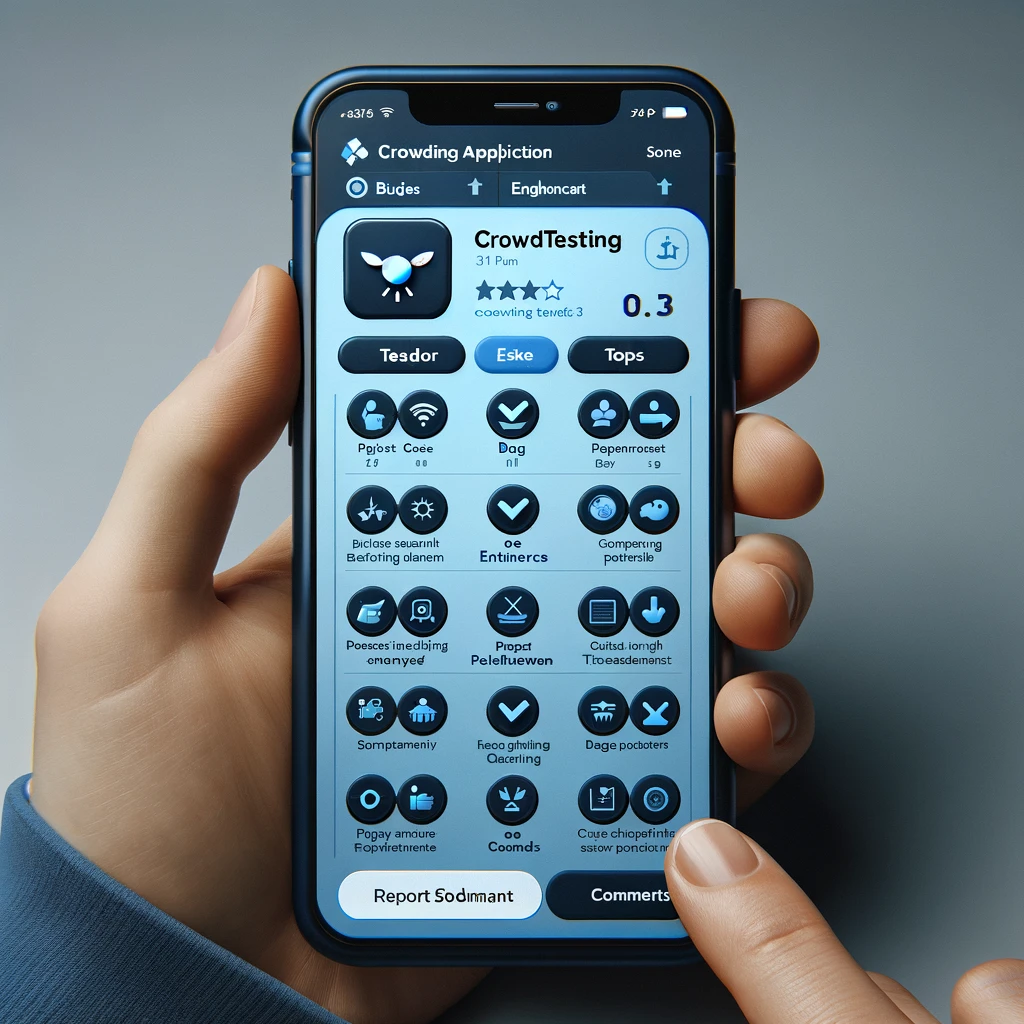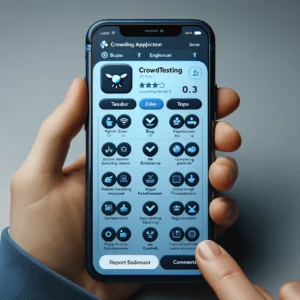The Evolving World of Mobile App Testing
Over the course of the past several years, the field of mobile app testing has undergone significant evolutionary changes, transitioning from rudimentary procedures to a sophisticated suite of practices that underline the software development lifecycle. In the vanguard of these changes stand the predominant platforms of Android and iOS, each presenting its own set of challenges and opportunities that have propelled the industry’s advance. Amidst this shift, both ecosystems have had a profound effect on driving innovation in mobile app testing, setting standards that continuously escalate, molding trends that not only aim to satisfy a checklist of technical criteria but strive to transcend user expectations. This environment of rapid progression demands an intimate comprehension of evolving practices, a facet that correlates directly with an app’s market performance and user approval.
The Shift to Automation: Streamlining Android App Testing
In the swiftly moving currents of the mobile development world, an increased emphasis has been laid on efficiency and expeditious turnaround times, birthing a significant shift towards the integration of automated testing paradigms for Android apps. The realm of automation has introduced a remarkable evolution in how testing regimens are structured, offering a pathway to optimize testing workflows, accentuate precision, and reinforce the cornerstone of app development—quality. The adoption of automated test suites powerfully addresses the scalability demands of app testing, catering to an extensive range of user scenarios, and imbuing developers with the capability to push out refined applications expeditiously. This momentum towards automation not only diminishes the duration from conception to deployment but engenders a marked improvement in application resilience and user reception, cementing the indispensability of advanced tools and systematic processes in crafting distinguished and durable digital products.

Leveraging AI for Enhanced Testing Precision
With the dawn of Artificial Intelligence (AI) in the landscape of mobile app testing, organizations have been empowered with tools to forge ahead with formidable precision and foresight. Through the craft of AI and its cohorts in machine learning, QA specialists have at their disposal, a predictive force that unveils the potential for future-proofing applications against possible aberrations. As these technologies continue to mature, the agility of the testing process burgeons, creating an environment where Android and iOS app behaviors are not merely observed but anticipated and pre-emptively optimized. This convergence of AI with traditional testing is catapulting the realm into a future where the pre-release performance of mobile applications can be forecasted with an astonishing degree of accuracy, marginalizing errors, and leaving little to chance or unpredictability.
Cross-Platform Testing in the IoT Age
The ascendancy of the Internet of Things (IoT) denotes a monumental divergence in the living architecture of interconnected devices, where the old separations between differing platforms begin to blur into obscurity. The realm of mobile app testing finds itself at the intersection of this unparalleled challenge, where validation of seamless operation across a diverse and expanding network of devices is paramount. The complexity of ensuring a consistent and flawless experience, no matter the environment, calls for adaptive and robust cross-platform testing frameworks capable of simulating a plethora of real-world conditions, an undertaking critical to an app’s enduring success across the IoT continuum.
Scalability through Cloud Computing
In recent times, cloud computing has taken center stage, revolutionizing the approach to mobile app testing by unlocking unprecedented levels of agility and scalability. This technological marvel provides quality assurance teams with instant access to a global array of virtual testing environments and real device conditions, obliterating the limitations of physical resources and geographical tethering. The implementation of cloud-based testing paradigms means that geographical boundaries are transcended, allowing teams, regardless of their size or physical location, to conduct exhaustive and varied testing sequences, which ensures applications are vetted for a worldwide audience. The cloud’s omnipresent nature ensures streamlined collaboration and a continuity of testing endeavors, culminating in a seamless user experience that meets global standards.
User-Centric Testing: The Heart of Mobile QA
The ethos of current quality assurance practices for mobile apps is indelibly tied to the principle of user-centricity; a paradigm that holds the end-user experience as the pinnacle determinant of an application’s success. This period is characterized by an unprecedented emphasis on directly involving the end user in the testing phase through initiatives such as scenario testing and expansive crowd-testing mechanisms. Anchoring the testing process in user-centric methods avails developers of direct, unfiltered insights into real-world usage, preferences, and interface interactions. Such an approach ensures that applications are not just technically sound but resonate at a deeper level with user needs and aspirations, forging a closer alliance between the product and its intended market.
Prioritizing Security in App Testing Protocols
In a landscape increasingly defined by digital security threats, the sanctity of user data and app integrity has catapulted to the forefront of the industry’s conscience, with a security-first mindset pervading the strata of mobile app testing. This climate dictates that quality assurance processes must be innately woven with robust security testing practices, identifying vulnerabilities well before they escalate into threats. Developers and testers are now called to a higher standard of vigilance, deploying a gauntlet of security measures throughout the testing life cycle, ensuring applications adhere to the strictest security benchmarks. In embracing a proactive security posture, apps are rendered not only functionally sound but also steadfast in their resilience against the cunning and relentless nature of modern cyber threats.
Continuous Testing: The Agile Approach to Quality Apps
Amidst the rapid innovation inherent in Agile development, continuous testing has become the cornerstone, ushering in a new paradigm of app development and quality assurance. This rigorous practice is much more than a mere testing methodology; it’s a relentless pursuit of perfection that empowers teams to address and rectify any issues almost instantaneously. As the lifeblood of the Agile process, continuous testing provides a scaffold upon which high-caliber applications are crafted, with each version reflecting a meticulous adherence to user needs and flawless functionality. This approach doesn’t just streamline workflows—it embeds quality at the very core of the production cycle, promoting an operational ethos where excellence is not accidental but engineered with intent. Through continuous testing, Agile teams can master the delicate equilibrium between swift product releases and the assurance of enduring quality, delivering apps that not only meet but often exceed the fast-evolving expectations of users and the industry at large.
The Advent of Codeless Automation Tools
The emergence of codeless automation tools has marked a profound transition within the testing arena of Android and iOS applications, democratizing the ability to construct and execute comprehensive test strategies. These groundbreaking innovations have effectively dismantled the complexities that once gatekept the world of automated testing, fostering an environment where expertise in scripting is no longer a prerequisite to contributing meaningful insight into the testing process. This paradigm shift is significantly transforming the landscape, inviting a broader demographic to engage in the testing dialogue and enhancing the overall quality assurance narrative with invaluable perspectives that resonate deeply with end-users. The acceleration these tools bring to the testing lifecycle not only expedites the transition from development to deployment but ensures that apps are launched with a user-centric focus, optimizing performance and satisfaction while responding eagerly to the demands of the market.
The Diversification of Testing Frameworks
The diversification of testing frameworks is a response to the growing complexity and array of functionalities that modern Android and iOS applications boast. As apps become more intricate, interlaced with advanced features and integrations, the necessity for a dynamic toolkit capable of addressing a broad spectrum of testing requisites has never been more pressing. This need has catalyzed the development of a plethora of frameworks, each with its unique set of assets, designed to navigate the specialized waters of app testing—from assessing performance metrics to ensuring robust security protocols. As these frameworks evolve and intersect with the ever-expanding scope of app functionalities, developers and QA engineers are afforded the luxury of choice and adaptability, assuring that regardless of the specific demands or challenges an app may present, there exists a tailored testing strategy equipped to validate an application’s readiness for the digital world’s exactitudes.
Conclusion: Integrating Trends for Optimized Mobile QA
In conclusion, the vista of mobile app testing is one that is perpetually on the cusp of transformation, and the integration of emerging trends is more than a measure for adaptation—it is the compass by which success is navigated. As the ecosystem becomes increasingly competitive, the amalgamation of intelligent automation, AI-driven analytics, the scalability afforded by cloud infrastructure, the precision of continuous testing, and the diverse capabilities of modern frameworks becomes a clarion call to action. Such a multi-faceted assemblage equips developers and QA practitioners with a formidable arsenal to craft apps that not only excel but redefine the benchmarks for quality within the digital landscape.
For visionaries eager to embrace the frontier of innovation in mobile app testing, the present moment is replete with opportunity and promise. In order to harness the full potential of these forward-looking trends and ensure that your mobile offerings do not simply join the ranks but set new precedents, Testpoint extends an invitation to connect with our trailblazing testing solutions. By joining forces with us, your journey towards excellence in mobile app quality assurance is not a solitary venture but a shared expedition toward creating experiences that captivate and delight users across the globe.





